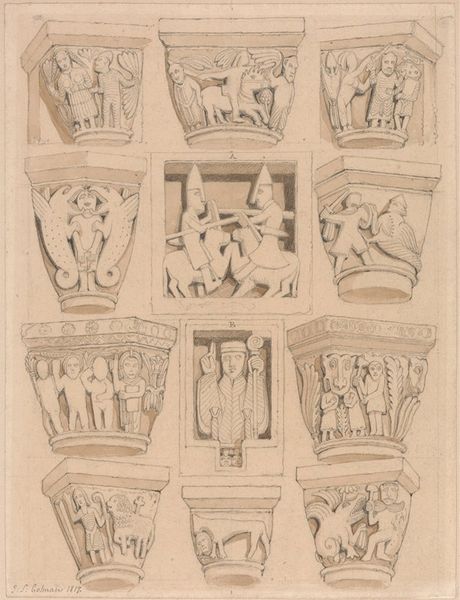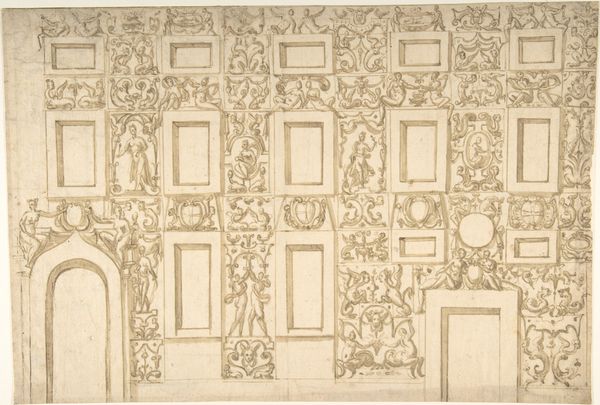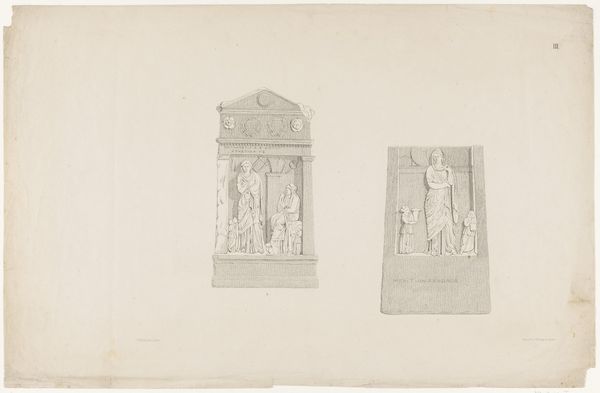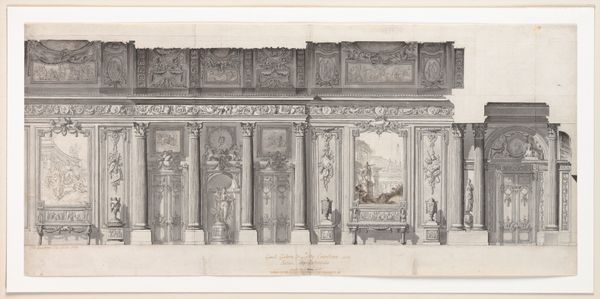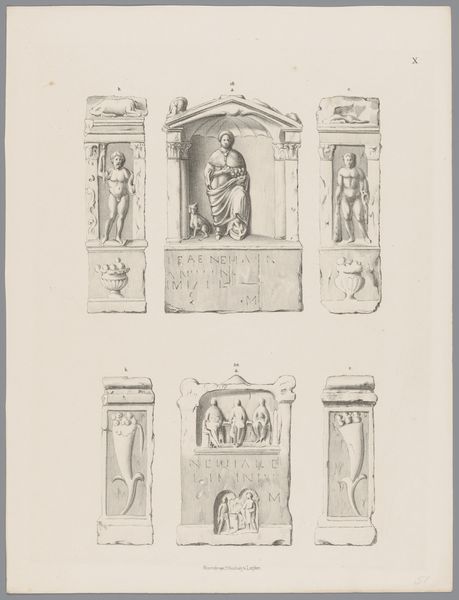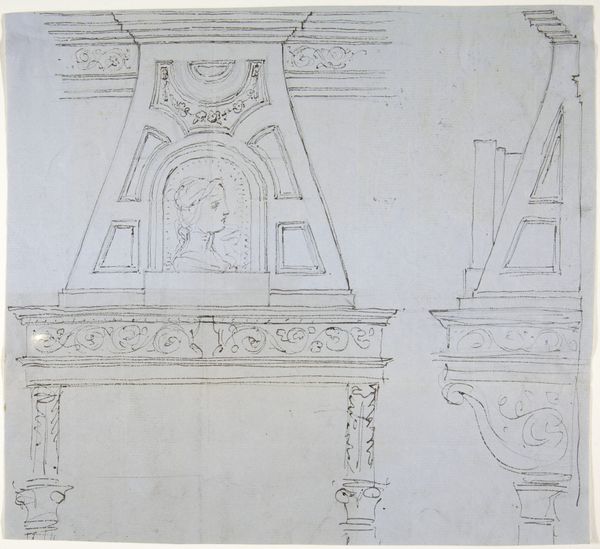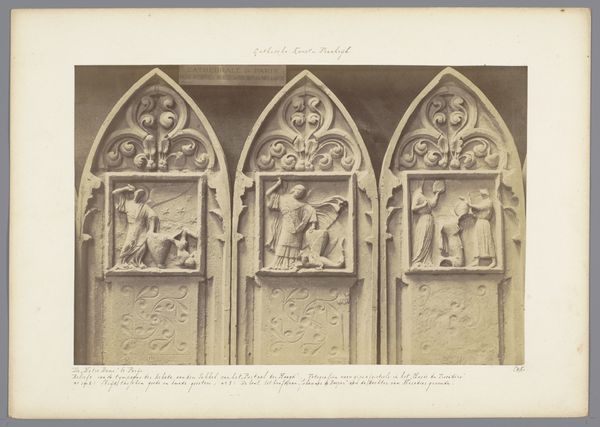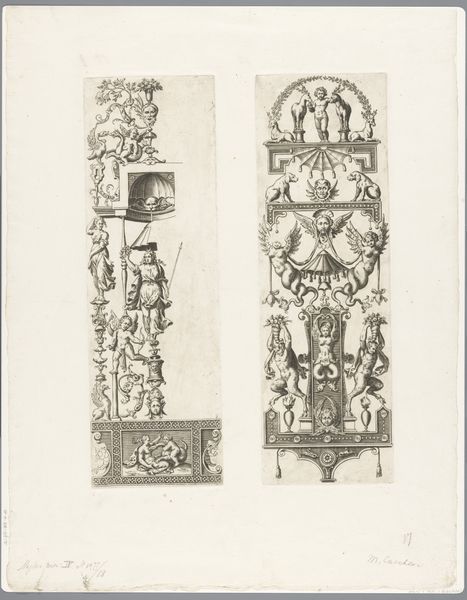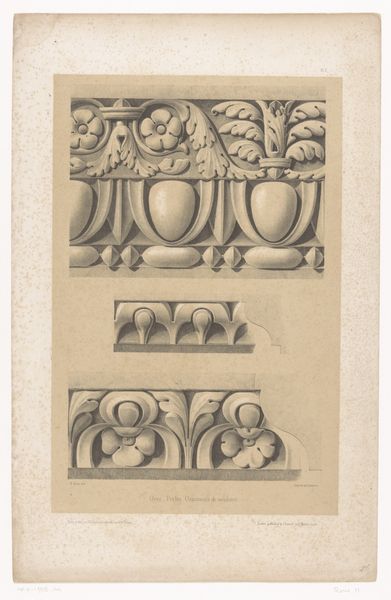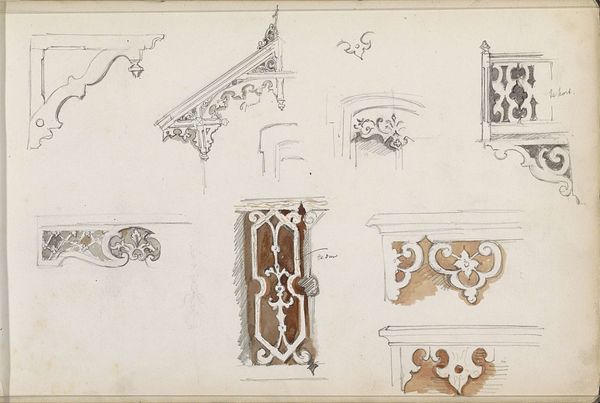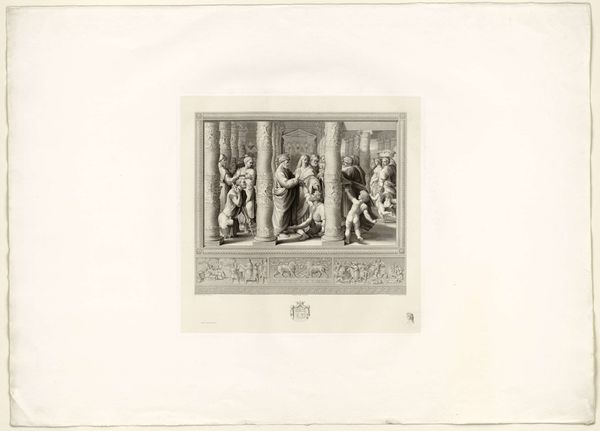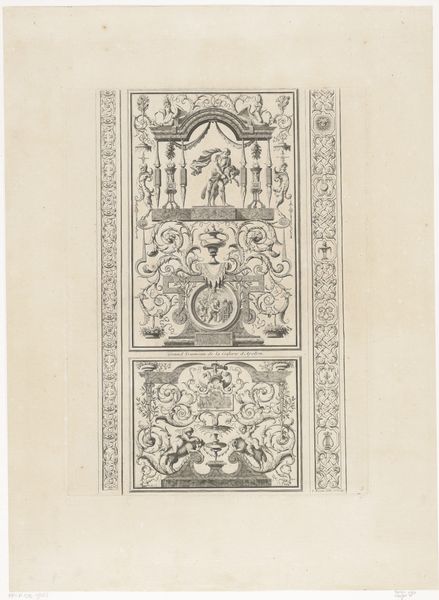
drawing, painting, watercolor, architecture
#
drawing
#
painting
#
figuration
#
11_renaissance
#
watercolor
#
architecture
Dimensions: 7 3/4 x 9 1/2 in. (19.69 x 24.13 cm) (sheet)
Copyright: Public Domain
Editor: This is "Studies of Statuary in Niches" by Karl Ludwig Wilhelm von Zanth, made around 1830, using watercolor, painting and drawing. I'm struck by how some niches are empty while others contain figures. What's your take? Curator: It speaks volumes about power, representation, and even erasure. Notice how the empty niches interrupt the consistent display of figures. Consider what histories, whose narratives, are deliberately absent. What does that absence signify during a time when national identities were being solidified? Editor: So the blank spaces aren’t just incomplete sketches? Curator: Exactly. They highlight a selective representation of history. Ask yourself, who decides which figures are memorialized and which are forgotten? Whose stories are deemed worthy of preservation, and whose are intentionally omitted? Editor: It’s almost like a critique of how history is curated… or not. Curator: Precisely. The very act of choosing which figures to portray reinforces societal power structures and biases. The artist might be asking us to think about the narratives we inherit and to question what – and who – is missing. Think about the rise of nationalism in 19th-century Europe, the focus on specific histories, and the suppression of others. Does this image resonate with current discussions on monuments and representation? Editor: It does now! The empty niches are super powerful in that context. I see it less as a study of statuary and more as a study of historical narrative. Curator: Indeed, art often holds a mirror to society, reflecting its values and prejudices, while also prompting us to question and reimagine them. It's a good reminder that art is never neutral, and our interpretation must always consider its historical and social implications.
Comments
No comments
Be the first to comment and join the conversation on the ultimate creative platform.
